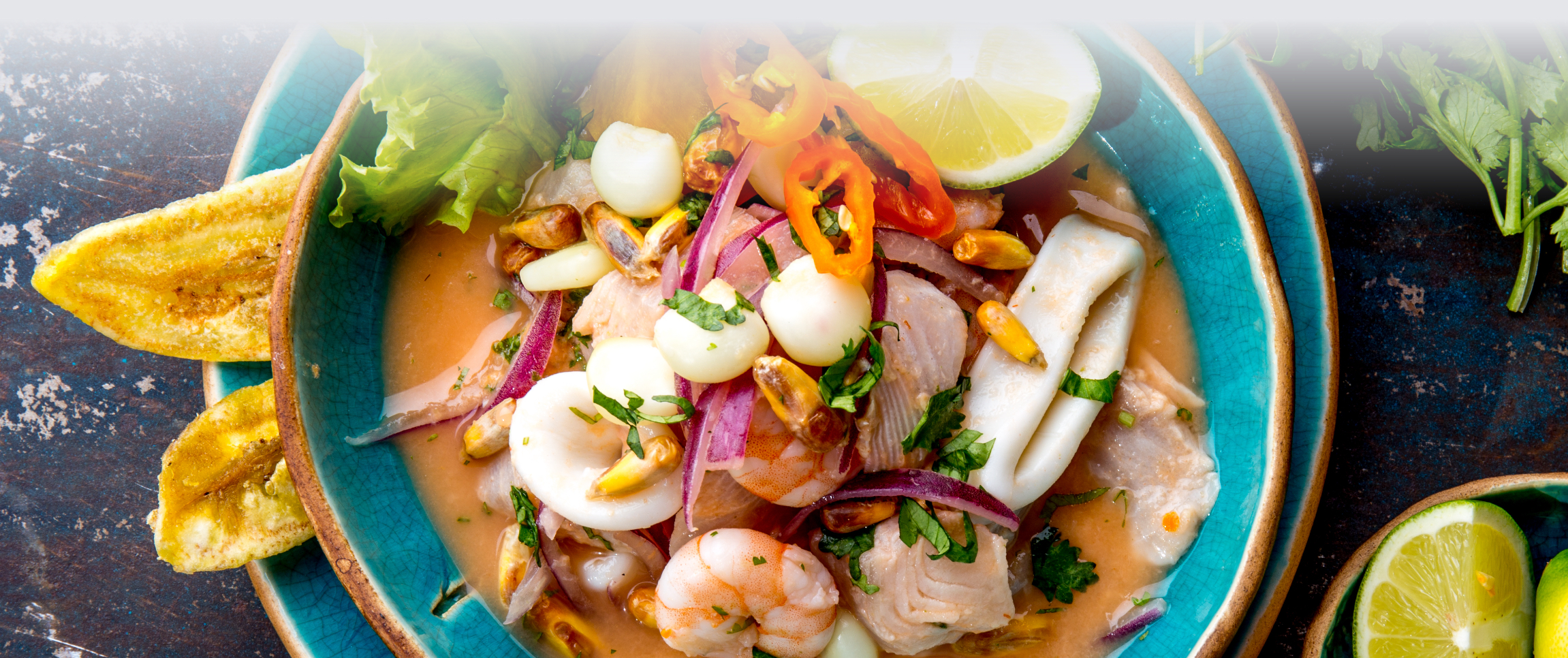Make your menu burst with fascinating Latin flavors.
According to Google Trends data, Mexican is the third most popular cuisine in America. It’s not hard to understand, after all, being just south of our border. But what drives the appeal is not only the variety of Central and South American countries that contribute to Hispanic cuisine overall, but the fresh and powerful pops of flavor that chefs incorporate into their dishes through out-of-the-box ingredient usage. With such a colorful array of ingredients to work with, injecting fiesta flair into your offerings can invigorate your menu and attract diners to your doorstep.
Peppers
Chili peppers are often referred to as one of the foundations of the Hispanic kitchen. Utilized raw, pickled, roasted or dried, they lend flavor in different nuances and spice levels. Consumers, familiar with the jalapeno pepper and its dried smoky counterpart, the woodsy chipotle, are primed to explore other varieties that increase the heat, add a little sweetness, or provide a combination of both. The rocoto pepper, which looks like a miniature bell and comes in red, green, yellow, and orange hues, has a spicy, grassy apple-tomato flavor that lends itself perfectly to be oven-roasted for punched-up salsas. If you are looking for something that doesn’t necessarily set the house on fire, the chilaca pepper, with its dark and wrinkly skin, is much milder. Grilled and then ground into sauces, they lend a deliciously robust, prune-like flavor to enchiladas and moles.
Fruits
One way to balance out heat-fueled recipes and add vibrance to the plate is to incorporate bright, tropical fruits. Lime—the key component in ceviche—is just a starting point; sunny pineapple and mango are always perky on the palate. But venture beyond and consider tamarind, a sweet and sour fruit that can be originally traced to Africa before it made its way to Central America’s shores. It’s dark, sticky pulp can be blended into marinades for steak or chicken dishes, then complemented with poblano peppers. Mamey sapote, a winter fruit most usually found blended with milk or in ice cream, makes an ideal fruit sauce component for roasted pork loin or pork shoulder.
Herbs and Seasonings
Nothing completes a world-class dish like clever finishing touches. Cilantro, prevalent throughout Hispanic cuisine, is now a staple in this country, its leaves garnishing everything from rice to tacos. But cilantro is a fully edible plant, the stems of which are sweet, tender, crisp, and potent. Roughly chop into 1-inch portions with the leaves for maximum impact. Native to Central America, epazote is an aromatic herb with notes of oregano, anise, citrus, and mint. Adding near the end of cooking to hearty bean stews or rustic mushroom or corn dishes pings the taste buds. Merquén, a spice made with sun-dried aji peppers that are then smoked and ground with coriander seeds and sea salt, is most often found today around the rim of a pisco sour. But this indigenous seasoning has many applications to add bold flavor, from using as a rub, to mashing into potatoes, to even sprinkling on pizza. Serve with a festive cocktail or aqua fresca and buen provecho!



